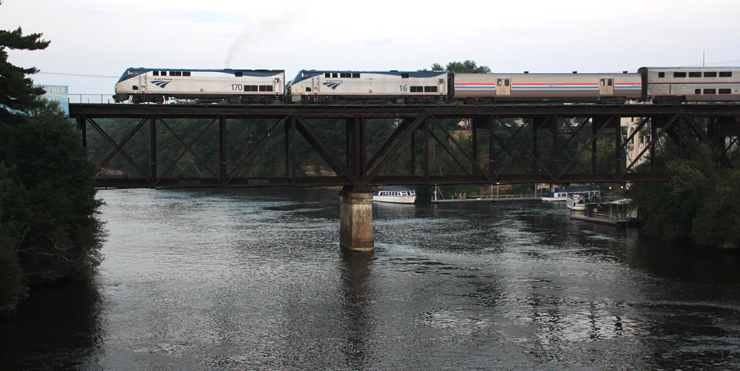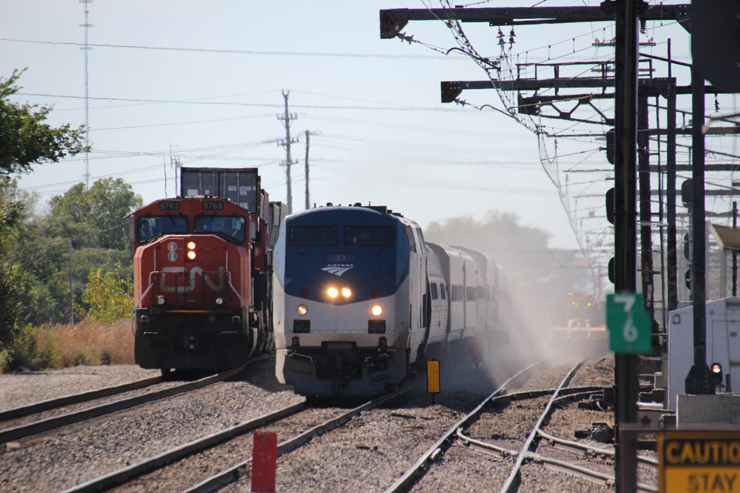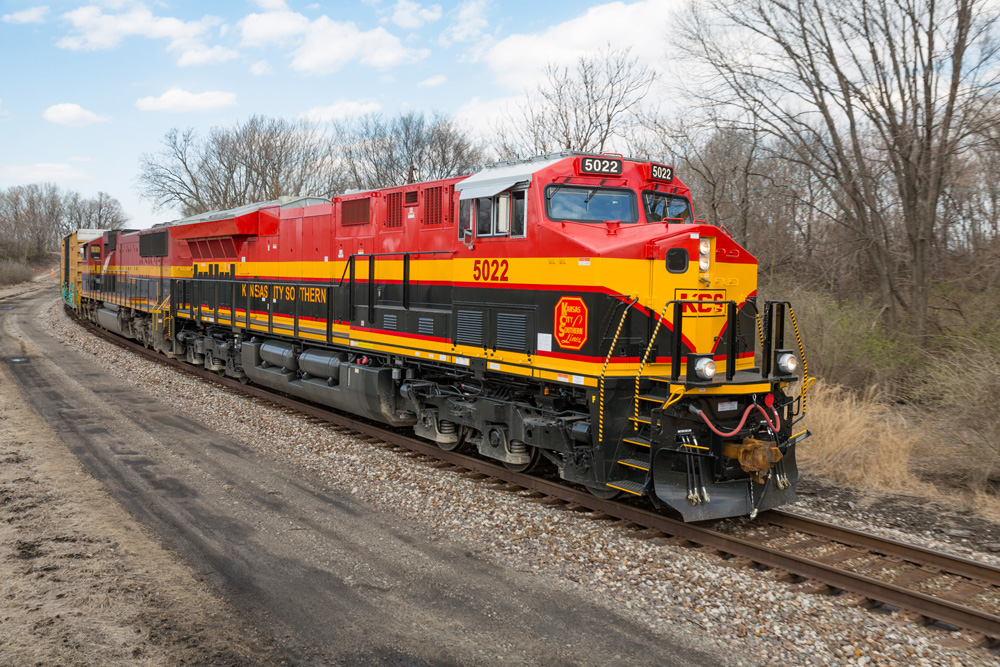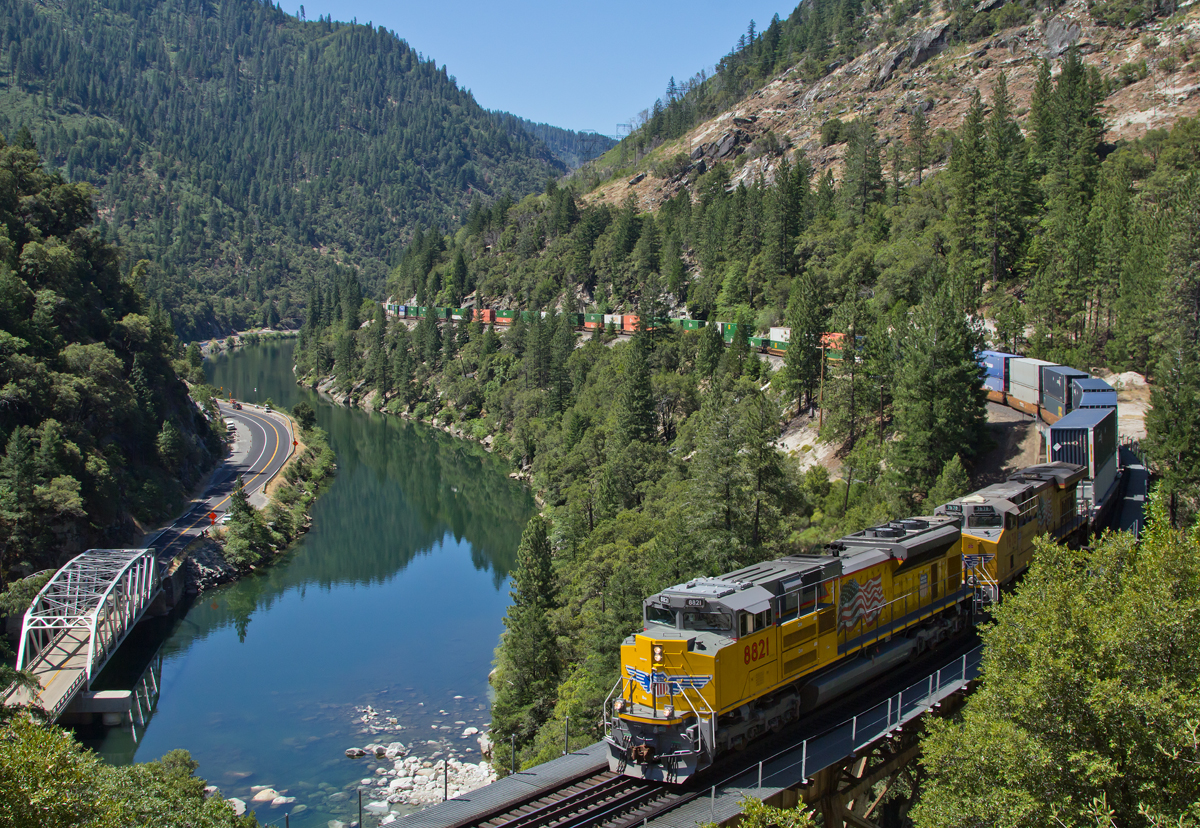
WASHINGTON — Amtrak could see notable financial gains from even a relatively slight improvement in on-time performance and significant gains with more substantial improvements, according to a report the passenger railroad has welcomed as an indication of the costs it incurs when host railroads fail to give its trains operating priority.
The report by the Amtrak Office of Inspector General estimates the passenger carrier could see $12.1 million in benefits from just a 5% improvement in overall on-time performance, and at least $41.9 million annually if trains reached a 75% on-time rate.
In response, Amtrak’s Dennis Newman, executive vice president, strategy and planning, issued a statement saying the company appreciates the analysis of “the significant financial consequences of poor on-time performance … which is primarily driven by delays caused by host railroads that own most of the rail lines used by Amtrak trains. The Amtrak OIG Report provides important information and recommendations with which Amtrak Management agrees and will implement in a timely manner.”
Newman said the latest report, along with an earlier estimate from the U.S. Department of Transportation Office of Inspector General of possible annual gains of $136.6 million with better on-time performance in the Northeast Corridor, “illustrate the real financial impacts of late trains. Beyond that, they confirm late trains impact every aspect of our operations, from equipment usage and staffing, to trip-time competitiveness and reliability for our customers. Extrapolating the results over a five-year period, there is more than $1 billion denied to our state and federal investors because Amtrak customers are not getting the reliable service they deserve and are lawfully entitled to receive.”
The new report says that a 5% increase in on-time performance would bring $8.2 million in reduced costs — through reduced labor and fuel costs, and savings in the costs of hotel and food vouchers for passengers who missed connections – and an additional $3.9 million in ticket revenue resulting from increased reliability. The report estimates that $6.9 million of this financial benefit would come from Amtrak’s long distance trains, which had an on-time rate of just 46 percent in fiscal 2018.

The projected $41.9 million gain from improvement to at least a 75% on-time rate would come from an estimated $11.5 million savings from reducing the number of on-call conductors and engineers; $20.5 million in maintenance on excess equipment maintained to protect routes with poor on-time performance (as well as an estimated one-time savings of $336 in equipment replacement costs); reduced crew penalty payments for overtime work (which cost more than $430,000 in fiscal 2018); a reduction in the number of crew bases needed; ticket sales on the Northeast Corridor for four long-distance trains where such tickets are not currently offered because of poor on-time performance; and reduced schedule recovery time, which could increase revenues by at least $7.2 million by making schedules more competitive.
Other notable details from the report:
— Amtrak managers said that better on-time performance would allow them to run trainsets through Chicago from one route to another, allowing “seamless service between more cities.” [A Milwaukee-Chicago Hiawatha trainset, for example, might be able to continue to St. Louis as a Lincoln Service train, or to Quincy, Ill., as an Illinois Zephyr]. This would potentially allow for elimination of a set of equipment.
— Amtrak made 1,329 crew penalty payments last year on trains scheduled for trips of less than 6 hours; those trains can operate with a single engineer, but if trips extend beyond 6 hours, the company pays the engineer a penalty equal to an 8-hour shift in addition to his or her regular pay. A single route — that of the Illini and Saluki between Chicago and Carbondale, Ill, scheduled for 5 ½ hours — accounted for 811 of those penalties, or 61 percent.
— Improved on-time performance could mean the Silver Meteor, Crescent, California Zephyr, Empire Builder, Southwest Chief, and Texas Eagle all could have the possibility of eliminating one trainset while maintaining service.
— Data from Amtrak’s Finance department showed that in the first five months of fiscal 2018 — before the railroad significantly changed its rules for handling of private cars — that private-car moves led to delays averaging 21 minutes per move.
The report also calls on Amtrak to better measure financial impacts of poor on-time performance, saying it would help in discussing the issue with Congress and other affected parties.
The full report is available here.














Don’t blame the host railroads for all of the poor OTP. Just look at the Amtrak twitter page and see how many times Amtrak trains are delayed because of a MECHANICAL issue. They almost rival the freight train interference.
“Can a government entity make the trains run on time?”
Have you never been to Europe? Really? I’ve taken trains all over Europe and in the UK when BR was the nationalized rail company and they almost all ran precisely to schedule. A late train is rare. And in the EU you are compensated for this, as you are with late airline flights (except for weather delays).
I’ve never traveled in Asia, but my understanding is that China is pretty precise about its train timetables. Russia, probably not so much. Wikipedia says Taiwan has 95.3% on time performance.
As for mechanical problems….you starve a company of capital expenditures for decades and you get old unreliable equipment. No news there. Amtrak is the 21st century’s Penn Central.
“But did Mussolini really do it? Did Il Duce, in his 20 years of absolute power, really manage to make the railway service meet its timetable? The answer is no.”
https://www.independent.co.uk/voices/rear-window-making-italy-work-did-mussolini-really-get-the-trains-running-on-time-1367688.html
Can a government entity make the trains run on time?
Steve: Amtrak might be able to afford to pay higher payments if it indeed resulted in much higher on-time performance and if that resulted in much higher revenue. This seems not to have been measured in this report?
@Charles Landey
So increased service and increased efficiencies are bad?
BTW, Milwaukee crew base is still open as far as I know.
I agree that the original agreement for reimbursement to the host railroad needs to be re-negotiated. The original logic was the railroads got to dump their unprofitable passenger trains so they should accept minimal payments for hosting Amtrak. But that was so long ago and its time to reflect today’s reality. Unfortunately, I believe the Feds have to agree to it so who knows if that will ever happen. I also doubt Amtrak could afford paying anywhere near what it would take to provide higher speed track if there’s only a couple of Amtrak trains a day using that track–but maybe they could pay enough to get first priority.
When Amtrk took over passenger from the railroads in 1971, they claimed they’d be in the black in five years, after 40 plus years I’m still waiting.
DAVID _ I don’t know anything about the crew base on the Saluki trains. Here’s what I do know about the Hiawathas: several years ago, Amtrak got publicity for adding a pair of trains on the Hiawatha, early morning NB, late evening SB. All well and good but what the newspaper didn’t mention was that the real reason for the added trains was to shut down the Milwaukee crew base and run all crews out of Chicago.
I can’t speak to the patronage level on the added trains – I have no way of knowing.
Landon, I agree. The original RailPax Agreement’s incentive payments should be renegotiated in conjunction with settling the on time performance matrix with the Class 1s. In CA the CCJPA pays UP real incentives to dispatch them on time and to maintain the track to (I believe something like) 70 mph passenger and 60 mph for freight.
Al, if they were operating my closely on time, they could be better maintained, which would led to fewer breakdowns; which in turn would lead to better OTP. A recursive cycle..both ways.
Anna Harding- I agree. We are all Bozos on this bus…
This has been going on for years. You would think Amtrak would change the crew base duties to avoid the extra payments on the Salukis. While they are at it , they could change putting the crews up in expensive downtown Chicago hotels.
I disagree with George. Managers do what’s important to their supervisors, or they don’t stay around for long. There has alway been an internal tug-of-war over the importance of passenger trains verses freight trains. Employee timetables used to (or maybe still do) list passenger trains as FIRST CLASS, through or manifest freights as SECOND CLASS, and lowly locals as THIRD CLASS. As such the class designation gave passenger trains timetable authority over all other trains. The operations rule book gave specific rights to passenger trains over freight trains. Nevertheless it always seems to come down to the desires of the “Boss.”
Mister Pins:
What you appear to be saying is that the physical plant is insufficient for the existing and proposed usage. You could easily be right, which goes a long way toward explaining the current mania concerning PSR. The railroads need to do more with less, and they are trying to figure out how to do it without alienating what customers they have left.
Once again, as a society, we should re-examine the social costs of trucks, cars, and air travel as opposed to railroads, not just the operating cost. Many costs of these modes of transport are not included in the bottom line. Then (and here I will use the “S” word) we should support those modes of transportation which exhibit the least social cost. I am talking about government subsidies here, socialism if you will, which I do realize is anathema in The New America. If it could be done honestly and objectively (both problematic when dealing with a government and the associated politics) it might be worthwhile.
But what do I know? I’m just a housewife in a small town in a forest. Would you like another cup of coffee?
The above comments are genetic in nature and do not form the basis for an attorney/client relationship. They do not constitute legal advice. I am not your attorney. Now with real glycerine Vibrafoam.
Numerical conclusions based on some facts and some multiplier of an estimate always make me smile. I’m sure many of the numbers in the report are documented right on, and I’m sure many are demonstrations of the joys of statistical evidence. One more nagging thought I’ve been having lately, and it’s all Fred Frailey’s fault – I’m thinking less that there is a giant nationwide conspiracy to kill Amtrak with a thousand cuts of late running, but rather that the days of double track main lines are less than what they used to be, there are more, longer trains, there are no more four track mains with two for passenger and two for freight; in sum there ain’t enough railroad anymore to run one set of trains (passenger) faster than another set of trains (freight) no matter how kindly the company and the dispatcher are disposed.
Not only would on-time performance help with Amtrak’s bottom line in terms of fewer penalties, less required equipment, etc., it would also make the customers happier.
Back in 1993 or thereabouts I wanted to ride LAX-TUS. The train was late getting out of LAX and after five hours of this I eventually turned around and went home – and the next day booked a plane ride. When I complained to Amtrak I was told the train ran, 11 hours late, and because the train had run I would not be getting a refund. My comment is not printable.
Amtrak also hung me out once to dry in PDX when the Empire Builder was late and I missed the planned connection to EUG. That time I blew my stack and they got me a hotel room and some meals, which helped my temper somewhat but didn’t help their bottom line.
If it were just me that would be one thing. Unfortunately such stories are rife, and word does get around. It is unclear to me if current management actually wants to do something about their on-time performance, but if they do, and they actually do something, it might, just might, help attract business.
The above comments are genetic in nature and do not form the basis for an attorney/client relationship. They do not constitute legal advice. I am not you attorney. I’m Gabby, your sacred cowboy, and you know, all this reminds me of that time in that sleazy roadside motel outside Baghdad California, when we sat around and smoked a gallon of LDS for a month one night.
Perhaps it would pay Amtrak to increase the bonus payments they make (or used to make) to the freight railroads to get the trains in on time. Even if Amtrak broke even on the extra bonus money, they would benefit in the long run.
I just got done re-reading Owen Wister’s “The Virginian”, a classic Western set in the latter half of the 19th Century. It begins with the protagonist arriving in Medicine Bow by train, six hours late. Oh yes and… they’d lost his luggage. (It does arrive the next day.)
The more things change…
An historical anecdote re: the rapid equipment turn utilization: back in the early 1950’s with the inauguration of the new Olympian Hiawatha, the Milwaukee considered a 40 hour Chicago- Seattle schedule. However, that may have been only for bragging rights with Santa Fe’s Super Chief.
It sounds like they didn’t measure the increased revenue and ridership Amtrak would get if trains ran on time.
About 15 years ago when the Vermonter improved its on-time performance, there was a 25% increase in ridership and those riders generated about 20% higher ticket prices each because the product is more valuable.
It ain’t all the freights’ fault. Frequent Amtrak equipment breakdowns, particularly locos, add a significant portion of delays to those mentioned above. They need to clean up their own act as well.
To Mr. Meyer’s point: What could happen is that rather than eliminating a train set, AMTRAK could actually add cars to existing runs to meet demand.
“Improved on-time performance could mean the Silver Meteor, Crescent, California Zephyr, Empire Builder, Southwest Chief, and Texas Eagle all could have the possibility of eliminating one trainset while maintaining service.”
Totally untrue. No saving of equipment could result. But improved timekeeping would certainly help maintain the current rotation.
JEFFREY – LDs are on life support. Where passenger trains rule is the commuter districts. As most of us know, the former Burlington has three tracks out of Chicago. Morning and evening rush, METRA and to a lesser extent AMTRAK eat up all three. One of the great sights in American railroading is the parade of BNSF freights suddenly appearing after the METRA rush winds down.